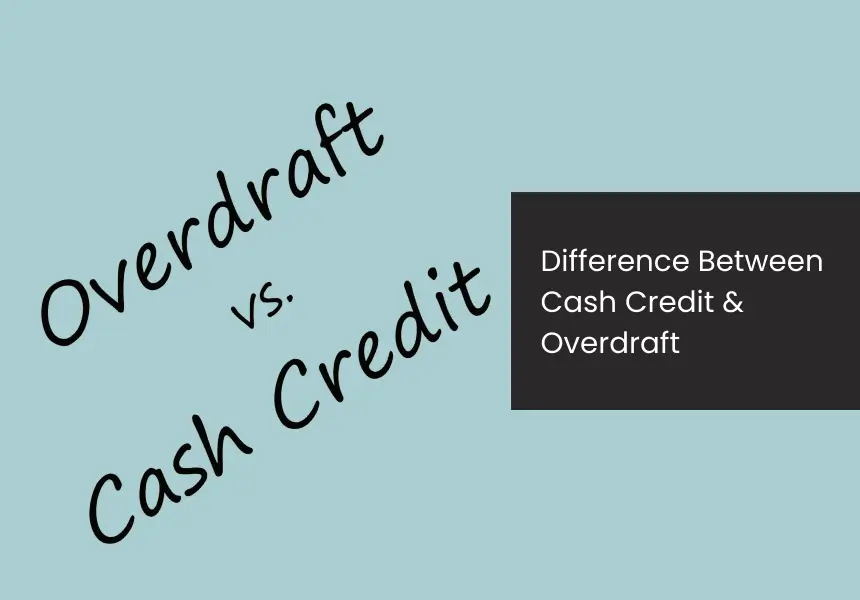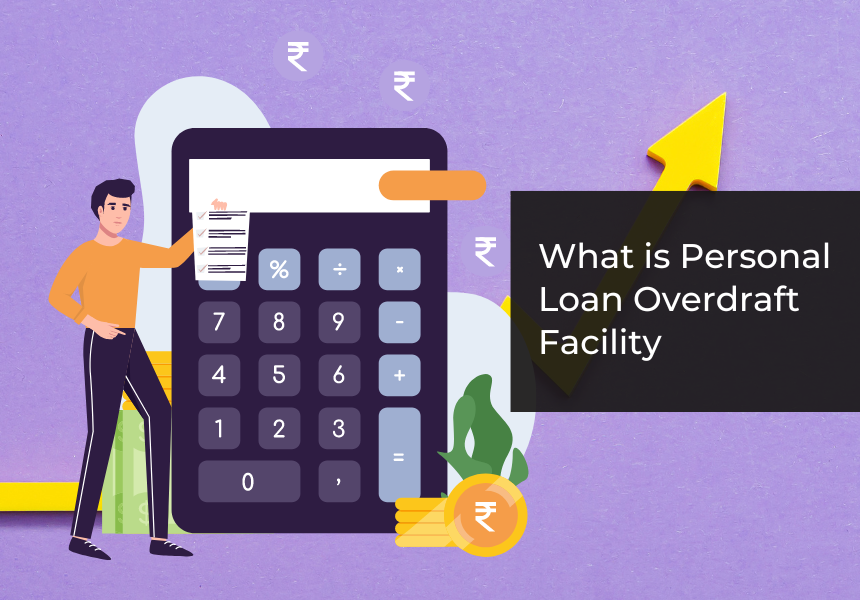
Financial institutions provide several credit solutions for businesses and individuals facing fluctuating cash flow or urgent expenses. Two commonly available options are cash credit and overdraft. While both facilities allow you to borrow beyond your immediate resources, they serve different purposes and operate under different terms.
Whether you need to finance business operations or cover personal expenses, it is important to understand how these facilities differ and can help in managing your finances effectively.
To begin with, let’s understand the meaning of cash credit and overdraft.
What is Cash Credit?
Cash credit is a type of short-term loan that businesses or companies can use to meet their immediate working capital needs. It is usually used to handle unexpected financial requirements, such as purchasing raw materials or covering operational expenses. The borrower can secure this loan by pledging collateral, which could be property, financial assets like fixed deposits or stocks, or even the inventory of goods manufactured by the company.
A cash credit provides businesses access to a specific amount of funds without maintaining a credit balance, making it flexible for managing short-term cash flow issues.
The eligibility for receiving cash credit depends on several factors, including the business’s credit history, type of collateral, credit score, and current assets and liabilities. This type of funding benefits small businesses that require access to capital without needing long-term borrowing.
What is Overdraft?
An overdraft is a type of financing provided by financial institutions that allows account holders to withdraw more money than is available, leading to a negative balance. Simply put, when you spend more than you have in your account, the overdraft covers the shortfall, but it must be repaid.
Financial institutions offer the overdraft facility as a type of credit. You can access a certain amount of funds beyond your available balance, and the interest is charged only on the amount withdrawn. This service usually has fees and interest, which makes it important to manage it carefully.
Difference Between Overdraft vs Cash Credit
To make it easier for you to understand, here are the main differences between overdraft and cash credit.
| Aspect | Cash Credit | Overdraft |
| Purpose | A cash credit loan facility allows businesses to meet their working capital requirements. | Both individuals and businesses can utilize overdraft facilities to cover short-term financial needs and manage immediate expenses. |
| Nature | Functions as a revolving credit line for businesses | Allows borrowing beyond the available account balance |
| Interest rates | Usually comes with lower interest rates | The interest rates are higher in comparison |
| Account requirement | Requires opening a new account | Can be accessed through an already existing account |
| Loan duration | The duration may vary, but most financial institutions offer tenure upto 1 year | Duration may vary depending on the financial institution |
| Collateral requirements | Requires pledging assets like inventory or stocks as collateral | It may require pledging collateral in some cases |
| Target Users | Primarily used by businesses | Available to both individuals and businesses |
Points to Consider While Availing Cash Credit or Overdraft
Both cash credit and overdraft provide financial support, but it’s important to consider several factors before choosing either option:
1. Interest Rate
Compare the interest rates offered by your financial institution. Cash credit generally comes with a lower interest rate compared to overdraft, making it more cost-effective for long-term business needs.
2. Foreclosure Charges
If you plan to close the credit facility before the agreed tenure, you might be charged with a certain foreclosure fee ranging from 1% to 2% of the loan amount.
3. Processing Fees
You must consider the processing fees associated with both facilities. These fees may add to the overall expense, so it’s important to factor them in when evaluating options.
4. Loan Utilization
In some cases, especially with cash credit, if the approved amount is not fully utilized, the financial institution may still charge interest on the unused portion. You must make sure to understand the terms regarding loan utilization before opting for any facility.
5. Penalty Charges
You must check for any penalty interest or fees that some financial institutions may impose for exceeding the sanctioned limit or not adhering to agreed-upon terms. Considering these potential charges will help you avoid unnecessary costs.
Conclusion
While both cash credit and overdraft offer convenient ways of financing, they serve different purposes. Cash credit is customized for businesses that need consistent working capital, and has lower interest rates and require collateral. Whereas, overdraft provides more flexibility for both individuals and businesses to handle short-term financial gaps, though it often comes with higher interest rates. Understanding the differences between the two can help in choosing the most suitable option based on your financial requirements.
Frequently Asked Questions
Which is more suitable for businesses, cash credit or overdraft?
Cash credit is generally more suitable for businesses as it helps in managing regular operational expenses over the long term. Whereas overdrafts are often used for temporary cash flow shortages. To find the most suitable facility for your business, consider the interest rates, repayment terms, and the amount of funding required.
How is interest calculated on cash credit and overdraft?
In both cash credit and overdraft, interest is charged only on the amount that has been utilized, not on the total sanctioned limit.
What type of security is required for cash credit?
Cash credit generally requires businesses to pledge assets like property, inventory, fixed deposits or stocks as collateral.
What factors affect the approval of an overdraft facility?
Approval for an overdraft depends on factors like the borrower’s credit score, financial standing, and, sometimes, available collateral or investments.
What happens if I exceed the approved limit in cash credit or overdraft?
If you exceed the sanctioned limit in either facility, the financial institution may charge a penalty or higher interest rates. It could also affect your credit score and future borrowing capacity.








